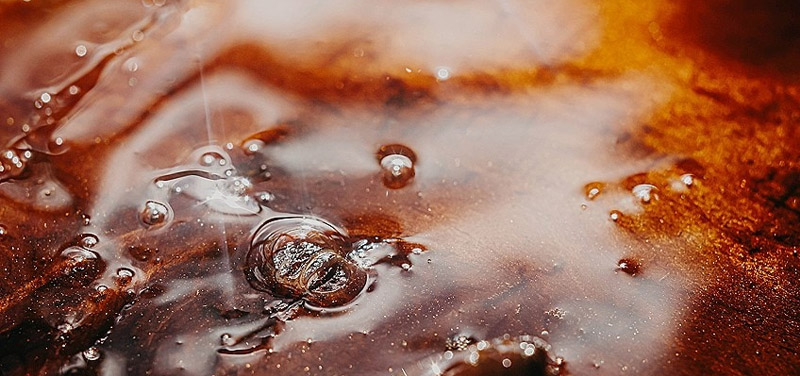
If your clear epoxy resin has not cured properly, it means that the chemical reaction between the resin and the hardener did not take place or did not take place properly. Sticky resin is usually caused by inaccurate measuring or insufficient mixing. The 3 most common curing problems include:
- Liquid resin: Causes may include not maintaining the correct mixing ratio of resin to hardener or adding too much colorant.
What to do? You will need to scrape off the liquid resin and pour in fresh resin in the correct mixing ratio. - Sticky resin: Often caused by inaccurate measuring, sloppy mixing or low curing temperature.
What to do? Try moving your casting piece to a warmer location. If it still doesn't harden, scrape it off and pour in fresh resin in the correct mixing ratio. - Soft, sticky spots: If you have localized sticky spots on an otherwise perfectly cured surface, this is likely caused by the pouring of scraped residue from a mixing vessel where there were imperfectly mixed parts of resin and hardener near the walls and bottom. What to do? Remove the sticky resin as best you can –- sanding, scraping...then very carefully and thoroughly remove sanding residue, dust, etc. Then pour fresh resin in the correct ratio.
Principles for proper mixing and pouring
- Be sure to follow the given mixing ratio from the application sheet or from the product label! The ratio is precisely calculated so that the free groups in the resin are precisely linked to the free groups in the hardener. Adding more hardener will not speed up the curing of the resin or make the casting harder, but instead will create poorly cured areas (sticky areas) or the resin will not cure at all.
- Always check if the mixing ratio is by weight or by volume!
- Be careful not to mix, e.g. only resin with resin or only hardener with hardener!
- Beware of large additions of pigments or dyes... Large additions of these substances can fundamentally affect the mixing ratio between the individual components and result in poor curing.
- The ambient temperature for casting and curing should ideally be between 21-25 °C.
- Stir the mixture carefully either by hand with a wooden stirrer for small volumes or with a slow-speed drill and belt agitator for larger volumes (slowly to introduce as few bubbles as possible). Mix so that both components are combined as much as possible, and also focus mainly on the places near the walls and at the bottom of the container. Mix for at least 3 minutes.
- Then pour into another mixing container and mix for 2 minutes again (this eliminates poorly mixed areas at the bottom and walls and thus sticky or poorly cured resin). In the case of adding pigments, especially metallic, pearlescent or powder ones, it is necessary to mix longer (due to the settling of the pigment at the bottom).
More information on mixing and pouring Veropal Clear Epoxy Resin at Epoxy Resin Casting Step by Step or call +420 737 108 685.




